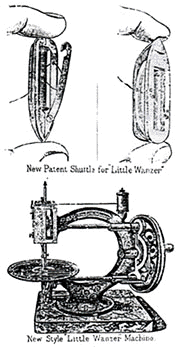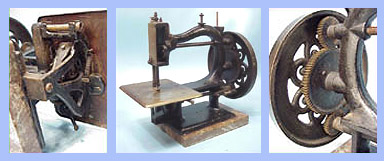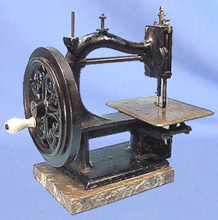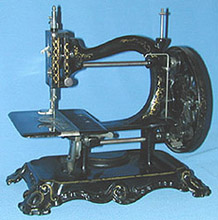


|
Following a recent spate of interest in Canadian-manufactured machines, I thought it appropriate to update my Wanzer notes. Little
Wanzer. By the late 1870's a new patented shuttle and take-up was introduced (see illustrations). This variant, along with the straight-race latter day machine, is fairly uncommon. |
|
|
Wanzer A. Until
recently, I had assumed the "A" model was introduced
in the mid 1870's, for its distinctive straight-race shuttle
mechanism was patented in the UK in 1875. |
||
|
|
||
|
If
one considers all of the above, it seems reasonable to speculate
that here we have the predecessor to the well known "A"
model. It would appear that the company's desire to produce
a more substantial counterpart to the successful Little Wanzer
may have come about several years prior to previously documented
dates. GD |
||
|
|




